Why is Yemen producing so little coffee? What are the flavor characteristics of Yemeni coffee?
Professional coffee knowledge exchange more coffee bean information please follow the coffee workshop (Wechat official account cafe_style)
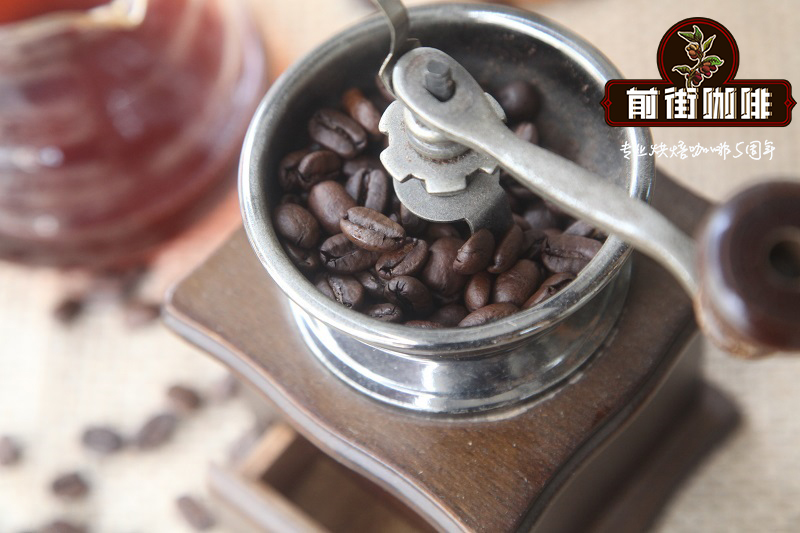
Mocha, mocha coffee silly points are not clear, this should also be a lot of coffee white just into the pit when the question, mocha is not mocha coffee, or mocha coffee and mocha what is the connection? Mocha is a sea port in Yemen, Africa. Coffee exported at the port is called mocha coffee, and ground coffee is first-class in both quality and flavor. Follow the front street to understand it!
Yemen is located in Western Asia, just a step away from the African continent. Coffee would still be a wild plant in Ethiopia if it were not for the Islamic priests who popularized it in Arabia. Coffee is said to have been introduced during Ethiopian rule in the 6th century and was named Qahwa, Arabic for red wine. The Ottoman Empire invaded in 1536 and controlled the coffee trade. To protect export earnings, the export of raw beans is strictly prohibited. Seeds must be boiled in boiling water before they can be exported.
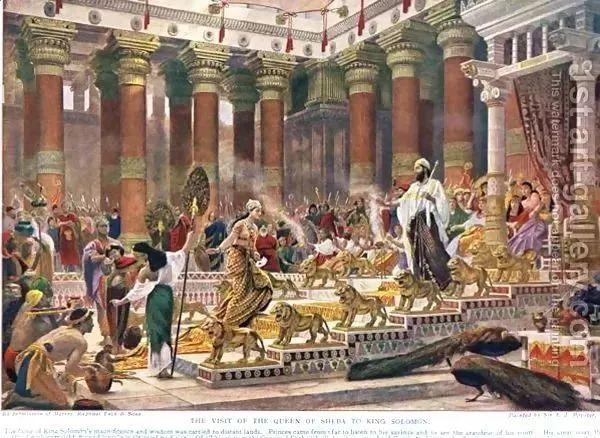
[history of Yemeni coffee]
Yemen is famous for its frankincense or spice trade and is the first place of origin in the world to grow coffee mochas.
If you follow before, this is also the place where Noah built the ark in the Bible.
Legend has it that the legendary queen, the territory of Sheba, who went to Jerusalem with gold, spices and large envoys 3000 years ago to find King Solomon and gave birth to a son. (it is rumored that this son is the first king of Ethiopia.)
In any case, perhaps because of the history since ancient times, it is said that the people in this land still have high self-esteem and are extremely independent.
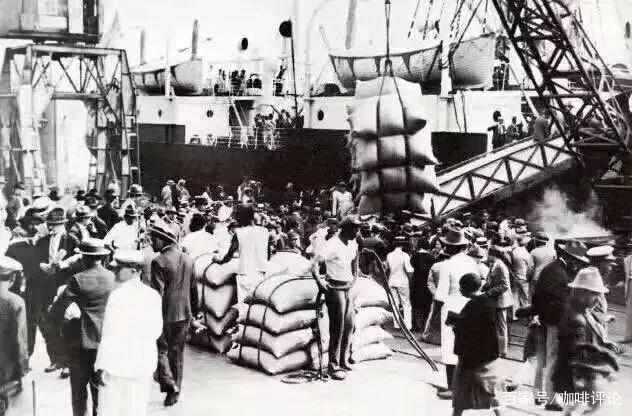
Yemen, which continues a way of life preserved thousands of years ago, is said to have many places that the central government's ruling power cannot reach. Ethiopia, across the sea from Yemen, also exports coffee through the port of Mocha, so Ethiopian sun-cured coffee is often called Mocha (e.g. Ethiopian Harar ETHIOPIA Harra Mokka). Yemeni mocha is the originator of the world coffee trade and has contributed to the promotion of delicious coffee to Yemen all over the world. It is called "Arabic Coffee", which is also the origin of the name of "Arabica Original".
It is said that in the 17th century Europeans imported coffee for the first time and spread it all over the world. The present "Mocha Harbor" has failed to sustain its prosperity compared to its previous reputation and has become a historical harbor with only white sand beaches left. Even so, it is still known by the name of coffee,"spread all over the world."
Although Ethiopia was the first country in the world to discover coffee, Yemen was the first country in the world to produce coffee on a large scale as a crop. At the beginning of the 17th century, the first batch of Yemeni coffee was exported to Europe via the ancient small port of Mocha, which surprised Europeans, because all coffee sacks exported should be marked with MOCHA to prove that they were transported from Mocha Port, so Europeans called the delicious coffee shipped from Mocha Port "Mocha Coffee". This is why early mocha became synonymous with coffee.
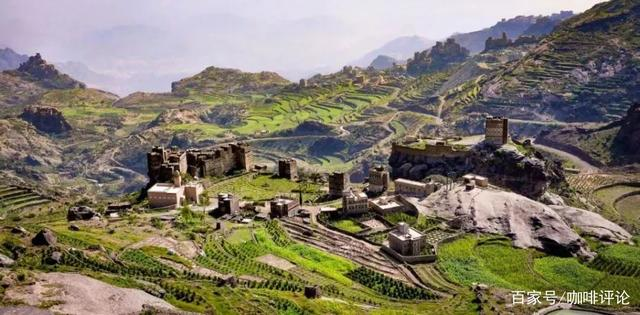
[coffee is rooted in dramatic history]
Coffee represents the focus of trade, social and even religion, ushering in the era of cafes, boosting Yemeni exports and even becoming a sacred medicine for Muslim monks to pray. However, coffee does not only have a good impact on Yemen. Yemeni coffee has also been hit by a controversial ban and become a victim of the war.
Moha to Mocha
The starting point of Yemeni coffee for the dramatic contribution to world history comes from the port city of Al-Makha Moha. Under the patronage of the Ottoman Empire, Yemen carefully manages its caffeine products. Insisting on not selling live coffee trees and seeds awakened the sleeping port and established a global coffee monopoly market.
Coffee from Moha began to be called mocha coffee, if the name is already a chocolate coffee drink. Mocha is certainly one of the varieties of coffee from Yemen, and the cup test SCA is defined as "generally speaking, the taste and flavor are similar to bourbon".
However, Yemen did not keep the secret in several ways: Dutch traders finally got live coffee trees by other means. Over the decades, coffee trees have been planted in places outside the Ottoman Empire and outside Yemen. The connection between the port of Moha and the Indonesian island of Java has also created the world's oldest known coffee mix-Java mocha coffee.
With the increase of coffee cultivation around the world, Yemen's coffee monopoly empire is in decline.
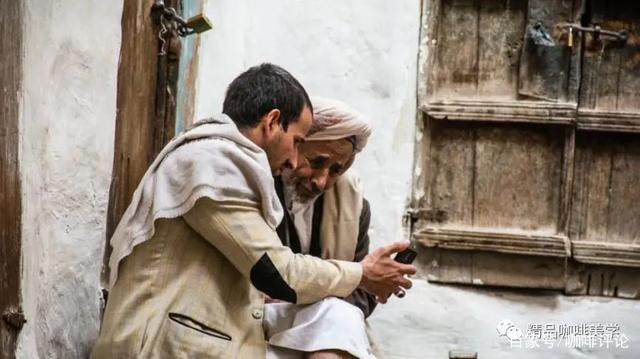
One of the driest countries in the world
Yemen is one of the driest countries in the world. Economically, the country currently relies on oil exports for three-quarters of its revenue, but the World Bank predicts that the country's stocks will run out around 2017. Once a self-sufficient farming country, 80% of its crops are imported. The reasons include population expansion and water shortages caused by local people overplanting Qat, a crop as old as coffee.
Chat grass is a social medicine commonly used by the inhabitants of the Arabian Peninsula. Yemenis like to open a room at home to entertain guests, chewing chit grass and chatting with friends. It contains cathinone, a stimulant that acts like a light amphetamine and refreshes the mind. However, after the drug wears off, the user will feel depressed. Although the World Health Organization (WHO) does not classify it as a drug, many Western countries have banned its import.
Yemen, on the other hand, has suffered from drought since ancient times. Its major cities rely on underground water sources, of which agriculture consumes 90% of the drinking water, and planting Qat alone has spent a lot of water, and the authorities expect that the underground water storage in the capital Sanaa will be exhausted by 2017. Most of Yemen's cities are built on high mountains, and residents rely on well water from government or private institutions for their livelihood. There are as many as 40,000 to 70,000 wells in the country, some as deep as 600 metres underground. Moreover, pumping water up the mountain is expensive, costing the government $7 billion a year to drill and pump. Therefore, in recent years, the local authorities have decided to ban the chate grass, which is both a waste of water and unable to satisfy hunger, and replace it with other crops. Amid the boom in specialty coffee, the Yemeni government is trying to encourage farmers to switch to coffee that consumes half as much water as chat grass.
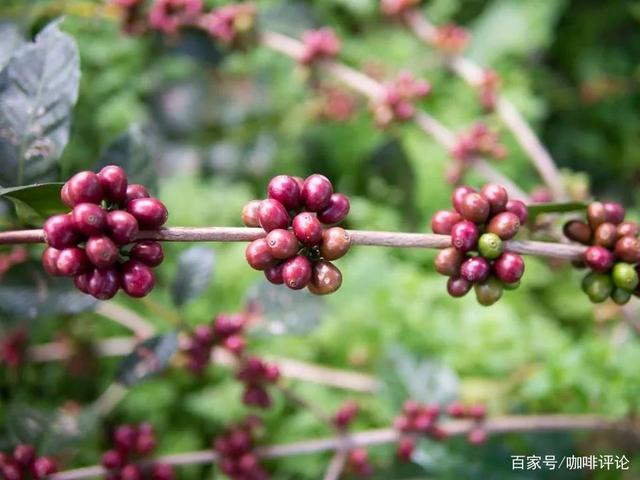
Follow the most primitive way of production
Real Yemeni coffee is not common. After the fruit is ripe on the trees, the farmers harvest it by hand and dry it on the roof of the stone house built by the mountain. The process of shelling meat depends entirely on crude stone grinding equipment. Due to inconvenient transportation, coffee will generally change hands several times, mixed with uneven size, new and old beans. In addition, there are many defects and improper handling. If measured by modern cup standards, Yemeni coffee is difficult to reach the grade of boutique. But high-quality Yemeni coffee has a unique flavor: complex Middle Eastern spices, bacon, ripe fruit, wine, cocoa, mellow taste and sweet taste. Like durian and stinky tofu, people who like and hate go to extremes.
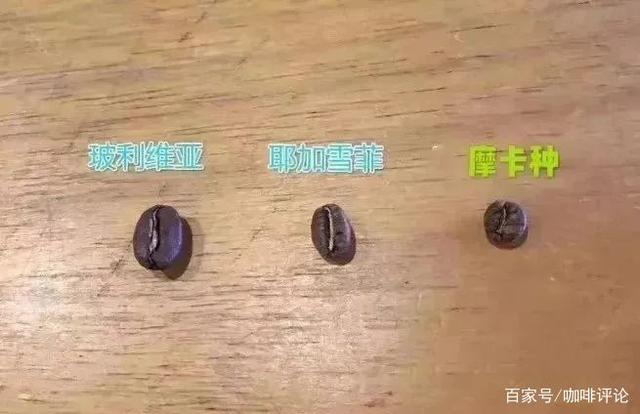
[coffee planting]
Because the steep slopes, valleys and depressions that can be planted in the mountains are very narrow, coffee farmers adopt distributed cultivation and plant a few plants whenever there is a suitable place, regardless of wild forests, cliffs or barren valleys. Experts pointed out that the diversity of the planting environment and the diversity of microclimate have created the ever-changing aroma and acid of Yemeni coffee. Some people laugh that there are no two beans with the same taste in the same sack of Yemeni coffee, which can be called "game" boutique coffee.
This is because Yemeni coffee is scattered among cliffs, vertical valleys, depressions, fields, terraces, plateaus and mountains, and even the same varieties will give birth to different fragrant elves due to different microclimate and soil quality, not to mention the wide variety of Yemeni coffee. Seasoned Yemeni coffee farmers can tell the variety and flavor of coffee from which hills, steep slopes, terraces, villages or areas the coffee comes from. In contrast, the monotonous flavor created by soil and water can not be compared with the single landform planted on a large scale in Brazil on the same plain or hill.
Yemeni dry lack of water, coffee beans are also relatively small, bean color is light green or yellowish. After the farmers harvest the red fruit, they put it on the roof of the farmhouse and expose it to the sun for two to three weeks to let the coffee fruit dry and hard.
During this time, the pulp essence will seep into the beans in the pods to increase the flavor. For about three to six weeks, depending on the dry and hard condition of the fruit, farmers use a traditional grindstone to crush the hard pulp and pods and take out the coffee beans (Yemeni coffee is often damaged or missing, which is caused by the grindstone, in addition to its smaller grains). In addition, Yemeni beans are also harder and brittle than ordinary coffee beans, and the collision in the handling process will also cause bean body breakage or defects, so the work of picking beans before baking can not be omitted, be sure to pick out these broken beans, so as not to deteriorate and affect the flavor.
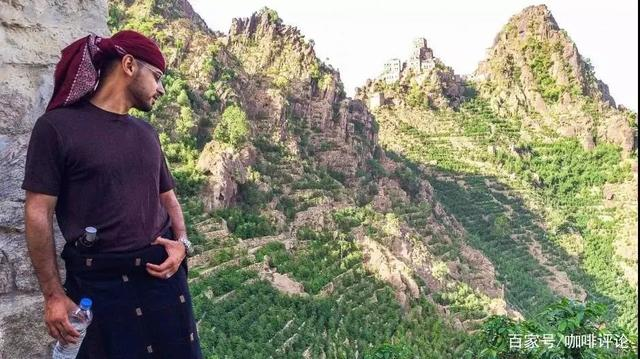
[planting varieties]
Mainly to Yishi Mary Ismaili, iron pickup Typica, Matali Matari-based, mocha is actually the real variety of Yemeni coffee called Udaini (Udaini). It is not only an ancient variety of iron pickup, but also one of the most common and oldest varieties of coffee in Yemen. The bean shape is very small, and some people call it mocha. Mocha is flat beans, not round beans, which are small and fragrant.
[coffee producing area]
Mocha Matali (MokhaMattari): the most famous coffee market name from Bani Mattar (another word for Bany Mattar) from the western part of the Yemeni capital Sana'a. Coffee is produced at high altitude, usually with a good aroma of red wine, dry fruit, thick taste, deep-roasted and often bitter sweet chocolate. Good quality Madali beans are small in shape, with sweet wine and moderate ripe fruit fermentation flavor of raw beans. Always the winner because of the more obvious Yemeni style. About 2000-2400 meters above sea level.
MokhaSan'ani: a widespread market name for coffee from some growing areas west of the Yemeni capital Sana'a. It is a mixture of beans from tens of thousands of small farms on the hillside near the capital San'a (left, Sana'a, Yemen). Planted at a slightly lower altitude than Madali, generally speaking, it tastes thinner and less acidic, but it has a good fruit flavor and often has better ripe fruit and wild game than Madali. It's about 1650 meters above sea level.
MokhaIsmaili: it is one of the traditional ancient tree species, and some people say it is the producing area, a market name for famous coffee from central Yemen, which is also described as a plant classification of traditional Yemeni coffee with high drink quality. Planted at a high altitude, in the rugged mountains of 1981 meters, the beans are characterized by more rounded appearance and inconsistent size, smaller beans than Madali, thick taste and high complexity. In general, they often surpass Madali. This is the least produced and most expensive Yemeni mocha (Yemeni mocha is no longer cheap). The high-quality Mokayishi Mary is produced in the alpine side of Hirazi District (although it is famous as Bani Matar, it is the best local reputation in Yemen). The highest elevation of Hirazi District is as high as 2438 meters!
Mokha Rimi: produced in the Djebel Remi (also known as Raimi, Rayma) area, the quality is similar to that of Shannani, which is usually slightly fermented, occasionally with surprisingly strong sweet aromas of raisins, and when roasted properly, the coffee beans smell like opening a full-bodied bottle of jam.
Mokha Yafeh: produced in the southern Yemeni province of Yafeh (also known as Yaffe), belongs to the uncommon Yemeni mocha, is the only "southern flavor" in Yemen, the production is not much, almost all of them are sold to the neighboring United Arab Principality, and it is rarely seen in the international boutique coffee market.
Arabian mocha: a coffee of single origin in the mountains of Yemen from the southwestern tip of the Arabian Peninsula bordering the Red Sea. The best cultivated coffee in the world is famous for its high viscosity and special acidity of rich wine.
Yemeni mocha has achieved different genres according to different planting areas, such as the chocolate and sour taste of Matali MATTARI, and the rudeness and fragrance of Sanani SANANI mocha.
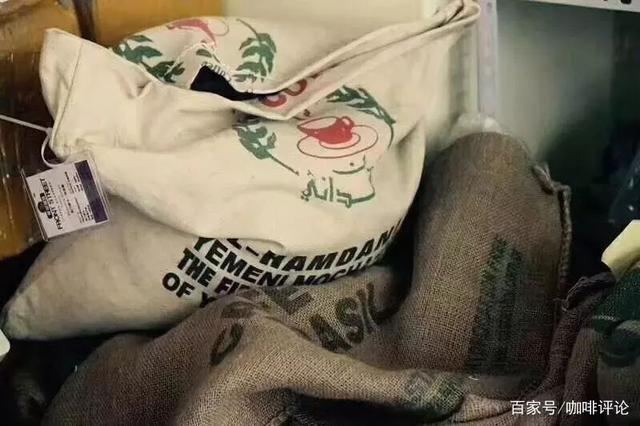
[confusing naming]
There are no general guidelines for the naming of Yemeni coffee, and there is no official grading system. Local residents have their own classification system, with hundreds of coffee codes and names for internal classification purposes, but they are not applicable to commercial markets (for export). In the commercial market, the Yemeni mocha is usually named in one of two ways: "place name", or "tree species name".
The Yemeni Mokamadali Mokha Mattari and the Yemeni Mokashanani Mokha San'ani are produced in BaniMatar province and the hillside near the capital San'a, respectively, while the Yemeni Mokamadali Mokha Ismaili is produced in Hirazi, southwest of BaniMatar.
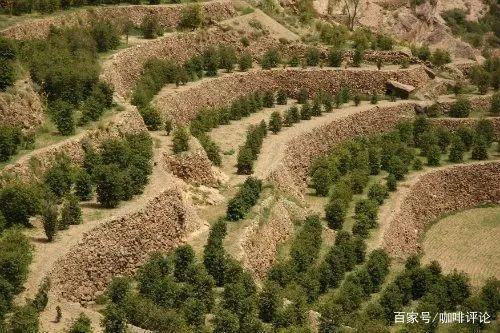
[treatment]
Ancient method of solarization
Yemen is a classic of the ancient morning taste of the sun, and it is also the only producer of full-time coffee in the world. the traditional treatment of dripping water is illegal, and it has not changed since Europe became infatuated with game mocha in the 17th century. This is related to the extremely dry climate in Shumen, where coffee is mainly grown in the central highlands, with an average annual rainfall of only 400 mm to 750 mm, much lower than the best rainfall of 1500 mm to 2000 mm in Arabica.
Yemeni coffee grows in steep terrain with little rainfall, poor land and insufficient sunshine. This unique and difficult condition is unfavorable to coffee growth, but it has given birth to the Yemeni mocha that can not be replaced by the coffee world. The main coffee producing areas are Sanani, Matari and Ismaili.
Matali production area is located in the highlands to the west of the capital, at an altitude of 2000 to 2400 meters above sea level, which is the highest in Yemen, but it is the most remote and inconvenient transportation, which often takes some time for farmers to transport after harvest.
Due to the lack of water environment, farmers have been unable to introduce more advanced washing methods, wild flavor is better than Hara coffee, so Yemen has become the best choice to experience the ancient early taste.
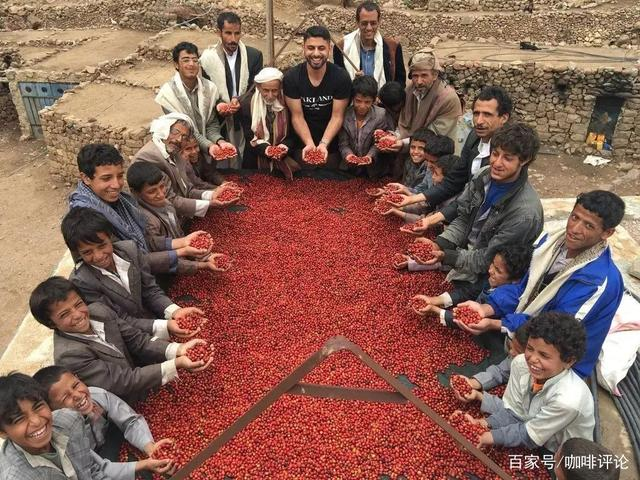
The highlands of central Yemen are hilly and rugged. Most small farmers use the planting method of breaking up into parts. Several plants are planted on steep slopes and dozens of plants are planted on terraces or cliffs, each with different soil and water and micro-climate, so the fragrance composition is also different.
The sun treatment of Yemeni farmers is rougher than that of Ethiopia and is spread directly on the roof to dry! This is different from the exquisite sun in which Ye Jia Xuefei or Sidamo picks red fruit and lays it on the "elevated net bed", which is the main reason for the heavy game in Yemen.
The ancient method of sun treatment in Yemen is to manually harvest fully mature coffee beans and directly place the newly harvested coffee beans in a special coffee drying field or in their own compacted soil front yard to receive the sun. During the sun, you usually use a wooden rake to turn over to keep each bean evenly dried. After about 20 days of coffee drying, remove the outer pulp and peel from the coffee beans.
Yemeni coffee is rich in flavor, complex, wild, mellow, strong fermentation and low acidity, coupled with the fact that Yemeni coffee often contains an uncertain factor (the time of rain in the season). It is not too much to call her the most special coffee in the world.
Refined solarization
Mokhtar Alkhanshali also blesses the beans in the Yemeni port of Moka with more elaborate sun treatment, while the beans in the Yemeni port of Moka also speak with flavor.
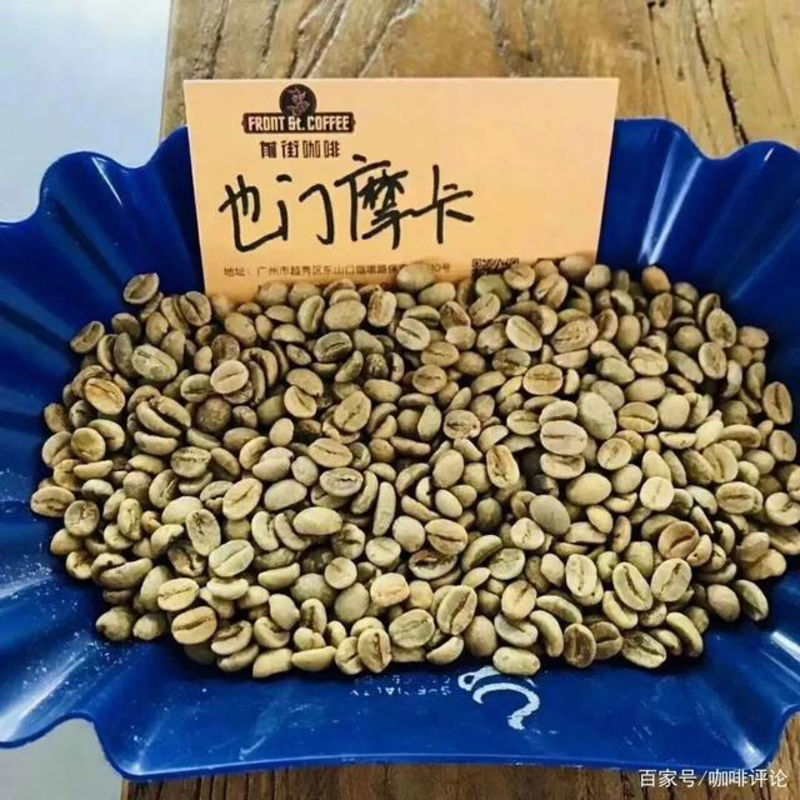
[on behalf of Coffee Yemen Mocha Mattari Yemen Mokamatari]
Country countries: Yemen Yemen
Region Origin:: Matali Mattari
Altitude altitude: 1300-1900m
Varietal varieties: Typica, Bourbon tin pickup, bourbon
Process treatment: Natural / Sundried sun treatment
Front street coffee Yemeni mocha coffee beans
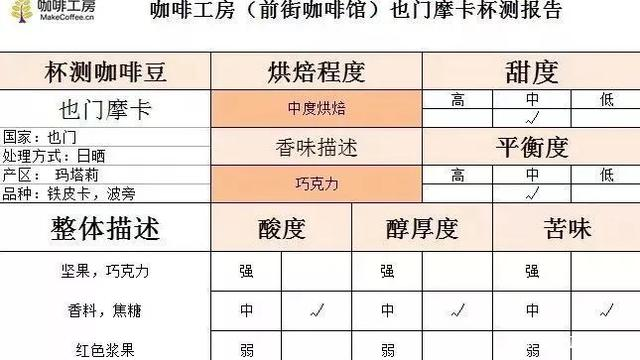
Cup test report:
Medium-baked City (caramel): coffee beans have an aroma of peanuts before grinding, caramel aroma after grinding, complex layers in the process of sipping, a little bit of gluconic acid in the changing tip of the mouth, a long finish of spices, sweet and round Shengjin with Middle East milk tea for a long time, and sweet malt at the bottom of the cup. The Yemeni mocha baked in China will continue to change. It is suggested that after baking for 14 days, the fermented flavor of complex game is the best.
Filter cup: V60
Water temperature: 88 degrees
Degree of grinding: medium thickness and fine grinding
Baking degree: medium baking
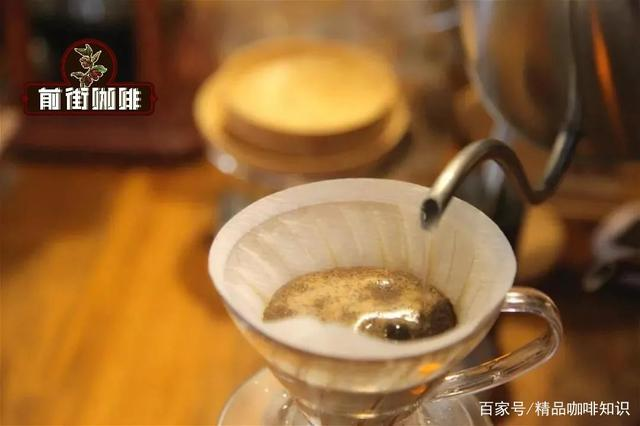
Suggested techniques: 15g powder, small Fuji ghost tooth cutter 4 grinding, V60 filter cup, 88-89 degrees water temperature, 30g water injection for the first time, 25 s steaming, water injection to 104g water cut off, wait for powder bed water to half and then water injection, slow water injection until 220g water, 5g in the end, no water powder ratio at 1:15, extraction time about 2:00. (after stewing and injecting water, the calculation begins)
Flavor: balanced, chocolate, long-lasting caramel sweetness.
Important Notice :
前街咖啡 FrontStreet Coffee has moved to new addredd:
FrontStreet Coffee Address: 315,Donghua East Road,GuangZhou
Tel:020 38364473
- Prev
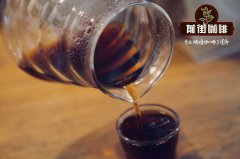
How is Yemeni coffee processed? What are the brands of Yemeni coffee?
Professional coffee knowledge exchange more coffee bean information please follow the coffee workshop (Wechat official account cafe_style) We now talk about the little knowledge of Yemeni coffee ~ coffee processing dry treatment. It is common for fresh coffee fruits to be dried on the roof. in addition, the older treatment includes branch drying, that is, leaving the coffee fruit on the branch and waiting for it to be naturally dried before picking. Coffee
- Next
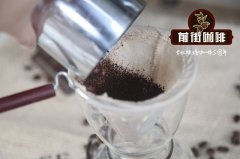
What is Yemeni mocha coffee? Why is Yemeni mocha coffee so old?
Professional coffee knowledge exchange more coffee bean information Please pay attention to the coffee workshop (Wechat official account cafe_style) mocha coffee is the world's oldest coffee, its taste is consistent with the ancient and mellow, long-standing mocha coffee, is synonymous with coffee, its unique aroma and sour taste, deeply attracted many coffee lovers. Some people say, coffee.
Related
- Detailed explanation of Jadeite planting Land in Panamanian Jadeite Manor introduction to the grading system of Jadeite competitive bidding, Red bid, Green bid and Rose Summer
- Story of Coffee planting in Brenka region of Costa Rica Stonehenge Manor anaerobic heavy honey treatment of flavor mouth
- What's on the barrel of Blue Mountain Coffee beans?
- Can American coffee also pull flowers? How to use hot American style to pull out a good-looking pattern?
- Can you make a cold extract with coffee beans? What is the right proportion for cold-extracted coffee formula?
- Indonesian PWN Gold Mandrine Coffee Origin Features Flavor How to Chong? Mandolin coffee is American.
- A brief introduction to the flavor characteristics of Brazilian yellow bourbon coffee beans
- What is the effect of different water quality on the flavor of cold-extracted coffee? What kind of water is best for brewing coffee?
- Why do you think of Rose Summer whenever you mention Panamanian coffee?
- Introduction to the characteristics of authentic blue mountain coffee bean producing areas? What is the CIB Coffee Authority in Jamaica?

